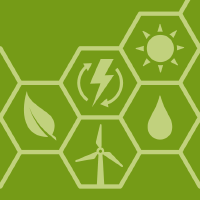Topic Menu
► Topic MenuTopic Editors


Frontiers of Optomechanics of Nanocrystals
Topic Information
Dear Colleagues,
The exploration of the materials world at micro- or nanoscale asks for significant manipulation technologies to control nanomaterials in precise and versatile manner. Optical manipulation in regarded as one of the most promising platform due to non-contact interaction, high accuracy, and flexibility in light management. Physically, optical manipulation arises from the optomechanic coupling during the light-matter interaction, which includes direct momentum transfer between photons and nanomaterials and multiple-field coupling to convert optical energy to mechanical energy. The response of nanocrystals to the light-generated force field provides opportunities to trap or actuate the nanocrystals for a variety of applications in functional photonic devices, biosensing and nanomedicine. The present multidisciplinary topic on “Frontiers of Optomechanics of Nanocrystals” will summarize the most recent progress in this field, including but not limited to optical trapping, optical levitation, optical micromachines, optical printing, and optical assembly, as well as their cutting-edge applications. We expect that this multidisciplinary topic will provide new guidance for the design of optomechanic nanosystems for future technical innovation and applications.
Dr. Linhan Lin
Prof. Dr. Hongbao Xin
Topic Editors
Keywords
- optomechanics
- optical manipulation
- optical tweezers
- optical printing
- optical force
- nanomaterials
Participating Journals
| Journal Name | Impact Factor | CiteScore | Launched Year | First Decision (median) | APC |
|---|---|---|---|---|---|

Crystals
|
2.4 | 4.2 | 2011 | 10.8 Days | CHF 2100 |

Micromachines
|
3.0 | 5.2 | 2010 | 17.7 Days | CHF 2600 |

Nanoenergy Advances
|
- | - | 2021 | 25 Days | CHF 1000 |

MDPI Topics is cooperating with Preprints.org and has built a direct connection between MDPI journals and Preprints.org. Authors are encouraged to enjoy the benefits by posting a preprint at Preprints.org prior to publication:
- Immediately share your ideas ahead of publication and establish your research priority;
- Protect your idea from being stolen with this time-stamped preprint article;
- Enhance the exposure and impact of your research;
- Receive feedback from your peers in advance;
- Have it indexed in Web of Science (Preprint Citation Index), Google Scholar, Crossref, SHARE, PrePubMed, Scilit and Europe PMC.

